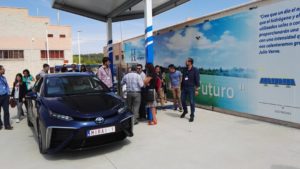The Historic Pioneer: The First Hydrogen-Powered Engine

Introduction
The history of engine technology has witnessed remarkable advancements over the years, and one of the most pivotal moments was the creation of the first engine powered by hydrogen as a fuel. In this article, we will journey through time to explore this pioneering milestone and understand its impact on the evolution of engine technology and the quest for cleaner energy sources.
1. Early Steps: Inventors and Experiments
The path to the first hydrogen engine was marked by a series of inventors and experiments. One of the earliest to tackle this idea was François Isaac de Rivaz, a Swiss inventor who, in 1806, built a vehicle powered by a hydrogen engine.
Technical Insights: Rivaz’s hydrogen engine used hydrogen stored in a gas cylinder and combined it with oxygen from the air to generate power, leaving water as the only byproduct.
2. Étienne Lenoir’s Internal Combustion Engine
Étienne Lenoir, a Belgian engineer, is widely recognized for developing one of the earliest internal combustion engines in the 1860s. Although his engine originally used coal gas as fuel, he later experimented with hydrogen. In 1863, he introduced an engine that ran on gaseous hydrogen, marking a significant advance in the history of hydrogen engines.
Technical Insights: Lenoir’s engine operated through electrical ignition that ignited the hydrogen-air mixture, producing mechanical motion. While not efficient compared to modern engines, it laid the foundation for future developments.
3. The Years of Nikolaus Otto
German engineer Nikolaus Otto played a pivotal role in the evolution of internal combustion engines. In the 1870s, Otto developed a four-stroke engine that initially ran on town gas but later explored the use of hydrogen.
Technical Insights: Otto experimented with the mixture of hydrogen and air, resulting in cleaner and more efficient combustion compared to other fuels available at the time.
4. Rudolf Diesel and Hydrogen
Rudolf Diesel, known for the diesel engine, also explored hydrogen as a potential energy source. In 1898, Diesel introduced an engine that operated on coal dust and oil but also investigated the possibility of using hydrogen.
Technical Insights: Diesel’s experiments with hydrogen revealed its potential as a clean energy source, but the lack of infrastructure for storage and distribution limited its adoption at that time.
5. The 20th Century and Ongoing Exploration
The 20th century witnessed significant advancements in engine technology, but the widespread use of hydrogen as a fuel was hindered by challenges in storage, distribution, and safety. However, research and development continued in laboratories and universities worldwide.
Technical Insights: In the 20th century, various hydrogen fuel cell technologies were researched for specialized applications, such as space exploration.
6. The Resurgence of Interest in the 21st Century
The 21st century has seen a renewed interest in using hydrogen as a fuel, with applications ranging from fuel cell vehicles to clean energy generation. The pursuit of more sustainable energy sources and the need to reduce carbon emissions have driven research and investment in hydrogen technology.
Technical Insights: Hydrogen fuel cells have become a promising technology for mobility and stationary energy generation applications.
7. Conclusion
The history of the first hydrogen-powered engine is a testament to human ingenuity and the constant quest for cleaner and more efficient energy sources. While early attempts were made centuries ago, the resurgence of interest in hydrogen in the 21st century promises a future in which this energy source plays a significant role in the transition to a more sustainable world.

























